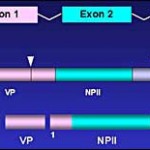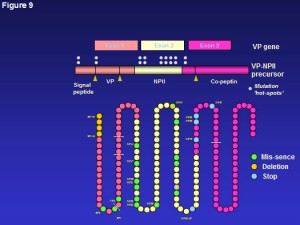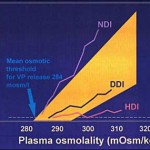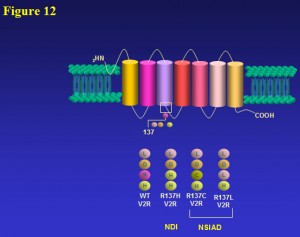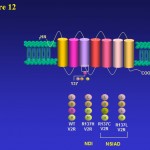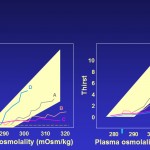Figure 3. Structural organization of the Vasopressin-neurophysin II gene, and processing of its product. The VP-NPII gene has 3 exons. Translation of the mRNA yields a larger preprohormone precursor, subsequently modified through substantial post-translational modification. The OT gene has a similar structure, and its product undergoes similar processing and post-translational modification. VP: Vasopressin; NPII: Neurophysin II.
